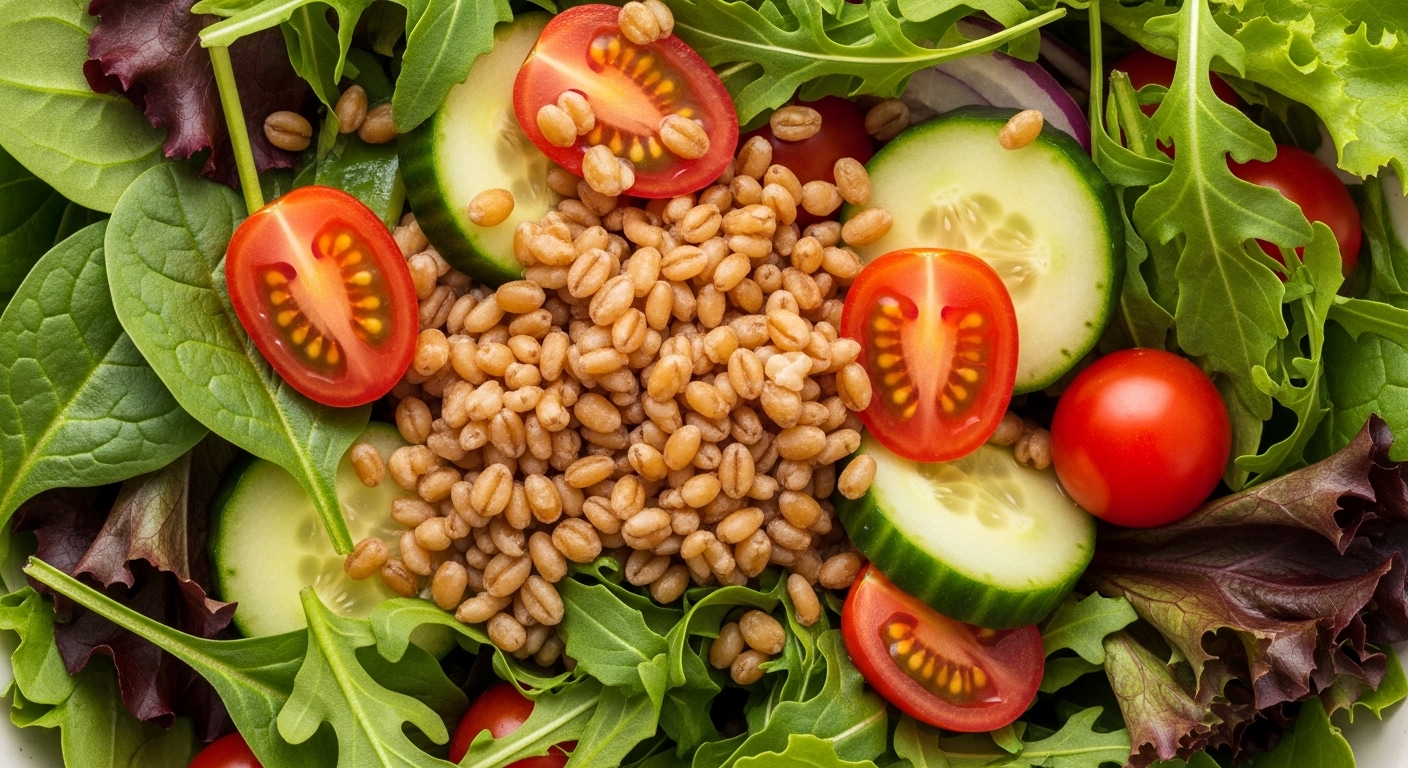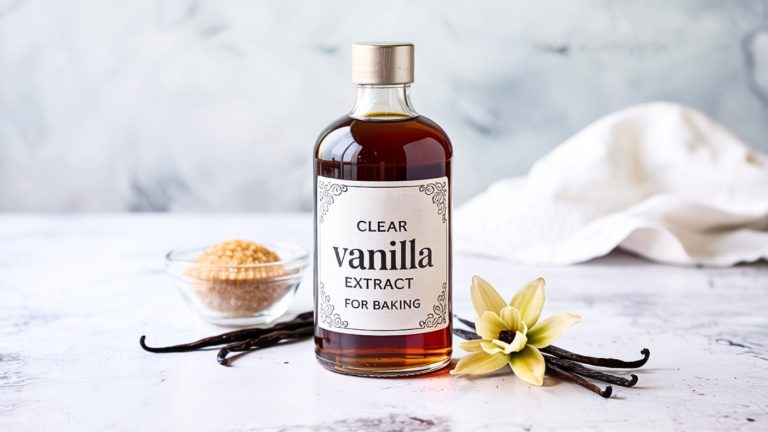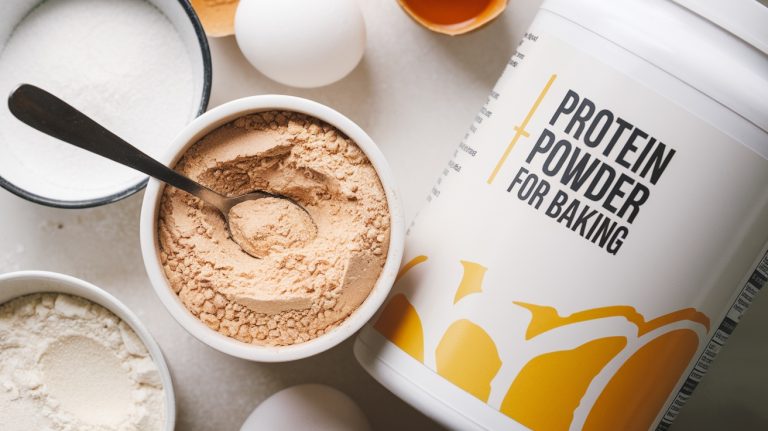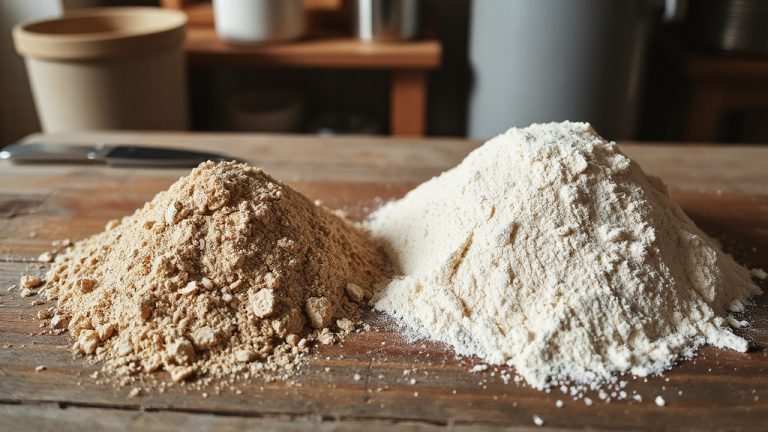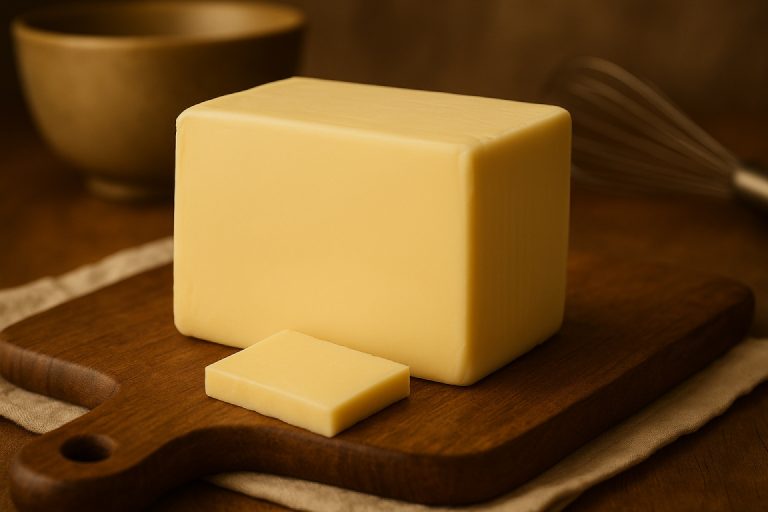Prairie Gold Wheat Berries: High-Protein Whole Grain Guide
You’re looking at Prairie Gold Wheat Berries, a chemical-free, high-protein hard white spring wheat grown in Montana’s high valleys. Packed with dietary fiber, minerals, and B vitamins, they support digestion, cardiovascular health, and energy metabolism.
Their nutty flavor and chewy texture enhance salads, soups, and baked goods, though they contain gluten, so be cautious if you have sensitivities. Proper storage keeps them fresh longer.
Exploring their origin, nutrition, and uses reveals even more benefits and considerations.
- 100% All Natural / No Preservatives / No Additives
Key Takeaways
- Prairie Gold Wheat Berries come from hard white spring wheat grown chemical-free in Montana’s high mountain valleys.
- They are rich in fiber, protein, B vitamins, iron, magnesium, and antioxidants, supporting digestion, energy, and heart health.
- Cooking takes 45–60 minutes boiling, or 20 minutes pressure cooking; soaking reduces cooking time and improves texture.
- Sold in bulk (10, 25, 50 lb) with sealable packaging, they require airtight, cool, dry storage to maintain freshness.
- Contain gluten and possible cross-contamination allergens, so they are unsuitable for gluten-intolerant individuals or those with celiac disease.
Origin and Sourcing of Prairie Gold Wheat Berries
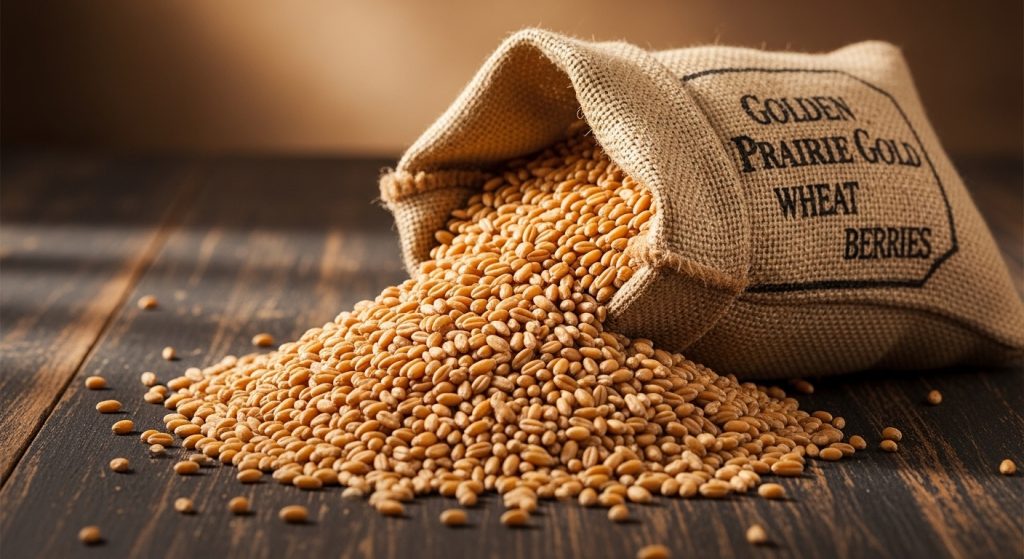
Although Prairie Gold wheat berries are a modern product, their origins trace back to the mid-19th century with Red Fife wheat, developed by Scottish immigrant David Fife in Ontario.
Red Fife arose from seeds likely sourced from Glasgow or eastern Europe, adapting as a spring-planted winter wheat with superior yields and rust resistance. Red Fife became the foundation of Canada Western Red Spring wheat, renowned for its high-quality flour and resistance to rust.
Prairie Gold wheat berries descend from Red Fife, a resilient 19th-century wheat developed in Ontario by David Fife.
Prairie Gold shares this lineage, reflecting a heritage of crossbreeding essential to Canadian and North American prairie wheat. This heritage supports the grain’s adaptability and quality, much like how artisan bread mixes rely on traditional fermentation techniques to enhance flavor and texture.
Today, Prairie Gold is primarily grown in Montana’s high mountain valleys, where cooler temperatures and ideal soil conditions preserve grain quality and vitamin retention.
Producers like Wheat Montana employ chemical-free farming and localized sourcing, ensuring minimal processing and freshness.
This precise origin and sourcing framework underpins Prairie Gold’s distinctive quality and suitability for artisanal milling.
Nutritional Benefits and Health Impact
You’ll find Prairie Gold wheat berries deliver a robust 3 grams of dietary fiber per 1/4 cup, essential for regulating digestion and stabilizing blood glucose. This dietary fiber acts as a prebiotic, promoting beneficial gut bacteria and improving digestive health.
Their 5 grams of protein per serving contribute to muscle repair and enzyme function.
Minerals like iron, magnesium, and phosphorus support oxygen transport and metabolic processes.
Incorporating these wheat berries into your diet provides a precise blend of macronutrients and micronutrients. This blend promotes cardiovascular and metabolic health.
Additionally, the bran and germ provide B-complex vitamins and vitamin E, which support energy production, antioxidant protection, and immune function.
High Fiber Content
Since dietary fiber plays a crucial role in metabolic and digestive health, Prairie Gold Wheat Berries stand out by providing about 3 grams of fiber per 30-gram serving, equating to roughly 13% of the daily recommended intake.
This fiber, derived from minimally processed whole grains, includes both soluble and insoluble types that support gut motility, promote satiety, and modulate glycemic response. These benefits align well with the high fiber content found in many vegan sourdough breads, which also promote healthy digestion.
By slowing glucose absorption and enhancing insulin sensitivity, the fiber content helps regulate blood sugar levels, reducing postprandial spikes. Additionally, it facilitates cholesterol and bile acid excretion, lowering LDL cholesterol and contributing to cardiovascular risk reduction. The fiber’s prebiotic effect fosters a healthy microbiota, improves bowel regularity, and may decrease colorectal cancer risk.
Because these wheat berries are made from hard white spring wheat harvested in Montana, they provide a high-quality and nutritious source of whole grains. Incorporating these wheat berries can therefore strategically support metabolic, digestive, and cardiovascular health.
Protein and Mineral Benefits
When you incorporate Prairie Gold wheat berries into your diet, you gain access to a significant source of plant-based protein and essential minerals that support multiple physiological functions. Each 30g serving delivers about 5g of high-quality protein, including essential amino acids necessary for tissue repair and enzyme synthesis.
The bran layer enhances this profile with additional protein and minerals like iron, phosphorus, and potassium. These nutrients collectively aid oxygen transport, bone integrity, and electrolyte balance. Proper storage techniques, such as vacuum sealing, can help preserve these nutrients for longer periods.
Prairie Gold wheat berries provide 6% of the daily iron value per serving, helping to prevent anemia. They also supply B vitamins such as thiamin, riboflavin, and niacin, which are critical for energy metabolism.
Additionally, the protein content supports muscle maintenance and promotes satiety. Consuming Prairie Gold wheat berries regularly can improve metabolic health and lower chronic disease risks due to their nutrient density and bioavailability. They are also an excellent source of whole grain fiber, which contributes to heart health and blood sugar regulation.
Culinary Applications and Preparation Tips
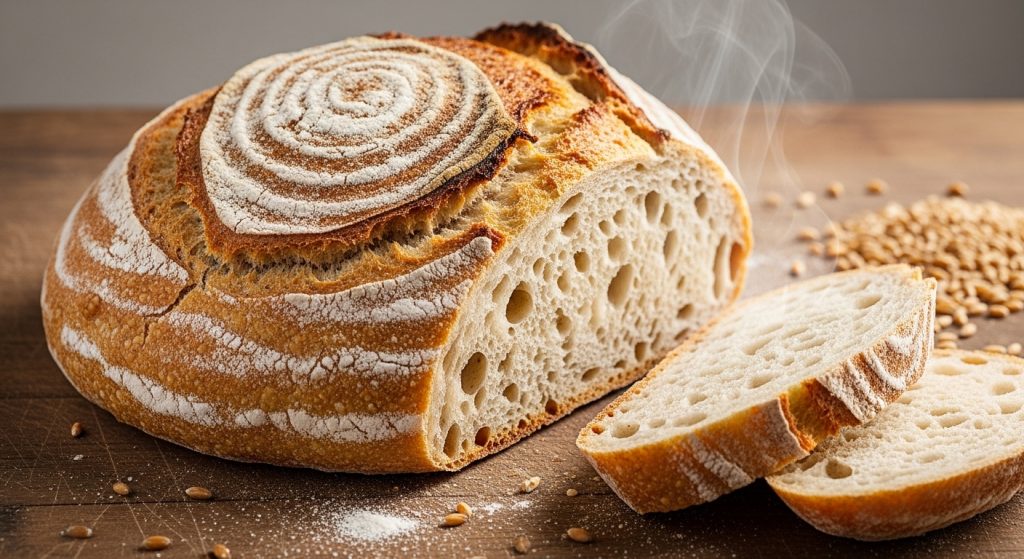
Although Prairie Gold wheat berries require longer cooking times compared to some grains, their versatile preparation methods make them suitable for a range of culinary applications.
You can simmer them for 45–60 minutes or use a pressure cooker to reduce cooking time to 20 minutes. Soaking prior to cooking improves digestibility and cuts down on time. It is important to store wheat berries dry in a cool, dry place to maintain their quality and prevent spoilage.
Incorporate cooked wheat berries into salads, grain bowls, or soups for added texture and flavor. Alternatively, grind them into whole wheat flour for baking.
Their nutty flavor and chewy texture enhance dishes both nutritionally and texturally.
| Application | Preparation Tip |
|---|---|
| Salads & Grain Bowls | Use cooked wheat berries for texture |
| Soups & Stews | Cook in broth for flavor infusion |
| Baking | Mill into flour for moist whole wheat |
| Cooking Time | Soak to reduce time before cooking |
Physical Characteristics and Quality Indicators
Understanding the physical characteristics and quality indicators of Prairie Gold wheat berries helps you assess their suitability for specific culinary and baking applications.
These hard white spring wheat kernels are large, smooth, and light cream to pale yellow, distinguishing them from red wheat varieties. Their intact, hard bran layer supports both whole use and milling into high-quality flour. Their consistent milling performance is enhanced by measurement accuracy in processing.
Key quality indicators include high gluten content, which ensures strong dough elasticity and excellent rise. The berries also offer a chewy texture with a tender bite when cooked, maintaining kernel integrity.
They are certified chemical-free and non-GMO, preserving natural gluten function and nutritional value.
You’ll find that handling requires care due to kernel hardness and packaging fragility, but the consistent milling and baking performance make Prairie Gold ideal for breads needing light structure and mild flavor. Additionally, these wheat berries are available for purchase online with free shipping, making them easily accessible to consumers.
Dietary Considerations and Allergen Information
You need to recognize that Prairie Gold Wheat Berries contain gluten inherently, making them unsuitable for gluten-intolerant individuals.
Cross-contamination risks exist due to shared processing facilities handling nuts, soy, and other allergens.
Always consider these factors when incorporating the product into sensitive diets or food preparation environments.
For those interested in sourdough baking, using wheat berries can contribute to a denser texture in whole-wheat sourdough breads.
Gluten Content Awareness
When managing dietary restrictions, recognizing the gluten content in Prairie Gold wheat berries is vital. These berries derive from hard white spring wheat, containing approximately 15% protein, primarily gluten. This level is higher than soft wheat varieties and slightly above traditional hard red wheat.
Additionally, Prairie Gold kernels are certified chemical-free and GMO-free, ensuring a pure and natural product for consumers seeking chemical-free wheat. The gluten content contributes significantly to the bread structure elasticity, which is essential for achieving optimal dough texture.
This elevated gluten level provides elasticity indispensable for bread structure. However, it renders the product unsuitable for people with celiac disease or gluten sensitivity.
Consider these key points:
- Gluten forms the structural network in dough, impacting texture and rise.
- Prairie Gold wheat berries aren’t gluten-free and must be avoided by those with gluten-related disorders.
- Allergen labeling on packaging highlights wheat protein presence, aiding consumer safety.
Cross-Contamination Precautions
Gluten presence in Prairie Gold wheat berries demands strict attention to cross-contamination hazards throughout cultivation, processing, and preparation stages. Accurate measurement tools, such as precision load sensors, are critical in ensuring consistency when handling gluten-containing grains.
You must recognize that proximity to rye, barley, pulses, and lentils increases cross-contact risks in the field and storage.
Equipment used for harvesting, milling, or transporting wheat requires rigorous cleaning to prevent residual gluten and microbial contamination, such as Salmonella detected in raw wheat samples. Studies have shown that Salmonella and E. coli can survive in raw wheat flour for extended periods, highlighting the importance of thorough sanitation.
In manufacturing, shared utensils and surfaces necessitate validated sanitation protocols to avoid unintended gluten presence, as visual inspection alone won’t suffice.
Foodservice settings pose additional challenges; you need thorough cleaning of all cooking tools and clear staff training to minimize allergen transfer.
Managing wheat allergen exposure hinges on strict segregation, verified gluten-free claims, and all-encompassing cross-contact controls to protect sensitive individuals effectively.
Packaging, Storage, and Purchasing Options
Although Prairie Gold wheat berries come in various packaging formats, bulk sizes such as 10 lb, 25 lb, and 50 lb bags dominate both household and commercial markets. This is due to their cost-efficiency and storage convenience.
These bags use sturdy, sealable materials to maintain freshness. However, 25 lb bags require careful handling to prevent bursting during transit. Using airtight containers for storage can help preserve wheat berry quality effectively.
You should store wheat berries in airtight containers in a cool, dry place. Keep them away from sunlight and strong odors to preserve nutritional quality and extend shelf life. Because these wheat berries are chemical free, they retain their natural qualities longer with proper storage.
Purchasing options range from direct mill sales to online vendors. Prices generally decrease per unit as quantity increases, making bulk purchases cost-effective.
Bulk purchases reduce the cost per pound considerably. Additionally, chemical-free and non-GMO certifications help guide health-conscious buying decisions.
Refrigeration or freezing can further extend freshness after opening, ensuring the wheat berries remain in optimal condition for longer periods.
Frequently Asked Questions
How Long Do Prairie Gold Wheat Berries Take to Cook?
You’ll need to cook Prairie Gold wheat berries for about 60 to 90 minutes on the stovetop to achieve proper tenderness.
If you soak them overnight, you can reduce this to around 30 minutes.
Using an Instant Pot considerably cuts cooking time to approximately 20 minutes under high pressure.
Always start checking doneness at 25-30 minutes and add water as needed to avoid dryness.
Aim for a tender yet slightly chewy texture.
Can Prairie Gold Wheat Berries Be Sprouted at Home?
Yes, you can sprout Prairie Gold wheat berries at home by soaking them in water for 6 to 8 hours, then rinsing and draining thoroughly.
Keep them in a well-ventilated container covered with a damp cloth, rinsing 2-3 times daily to maintain moisture without waterlogging.
Sprouts emerge within 12 to 24 hours.
Once sprouted, dry them properly to prevent spoilage and prepare for storage or milling into sprouted flour.
Are Prairie Gold Wheat Berries Suitable for Making Gluten-Free Products?
You can’t use Prairie Gold Wheat Berries for gluten-free products because they contain high gluten levels, around 15% protein, essential for bread structure.
Coincidentally, their gluten strength, beneficial for traditional baking, directly conflicts with gluten-free requirements.
Since these berries aren’t certified gluten-free and are processed in facilities with cross-contact risks, they’re unsuitable for celiac or gluten-intolerant diets.
For gluten-free baking, you’ll need alternatives like rice or quinoa instead.
What Is the Best Method to Grind Prairie Gold Wheat Berries Into Flour?
The best method is impact milling or using a high-quality electric grain mill like KoMo, which preserves nutrients by maintaining low temperatures and produces a fine, consistent grind.
You should consider double milling or regrinding sifted bran to enhance fineness and extraction.
Avoid blenders for delicate baked goods due to coarse texture.
Adjust mill settings and use mesh sieves to separate finer flour, ensuring excellent baking performance and nutrient retention.
Do Prairie Gold Wheat Berries Require Soaking Before Cooking?
You don’t have to soak Prairie Gold wheat berries before cooking—they’re like little time bombs that soften with heat alone. Skipping soaking won’t compromise digestion considerably; rinsing thoroughly and boiling them directly works fine.
Soaking mainly accelerates cooking and can reduce phytic acid, but it’s optional. If you want to optimize nutrient absorption or baking quality, consider soaking; otherwise, just monitor cooking time and water to achieve your desired tenderness efficiently.
Why Prairie Gold Wheat Berries Deserve a Spot in Your Pantry?
You might wonder if Prairie Gold wheat berries truly offer superior nutrition and versatility compared to other grains. After examining their origin, nutrient profile, and culinary adaptability, it’s clear they provide unique benefits, especially in fiber and protein content.
Their robust physical qualities ensure quality and longevity, making them a reliable choice. As you explore their applications, consider how these wheat berries can enhance both your diet and cooking precision.
Last update on 2025-12-24 / Affiliate links / Images from Amazon Product Advertising API

